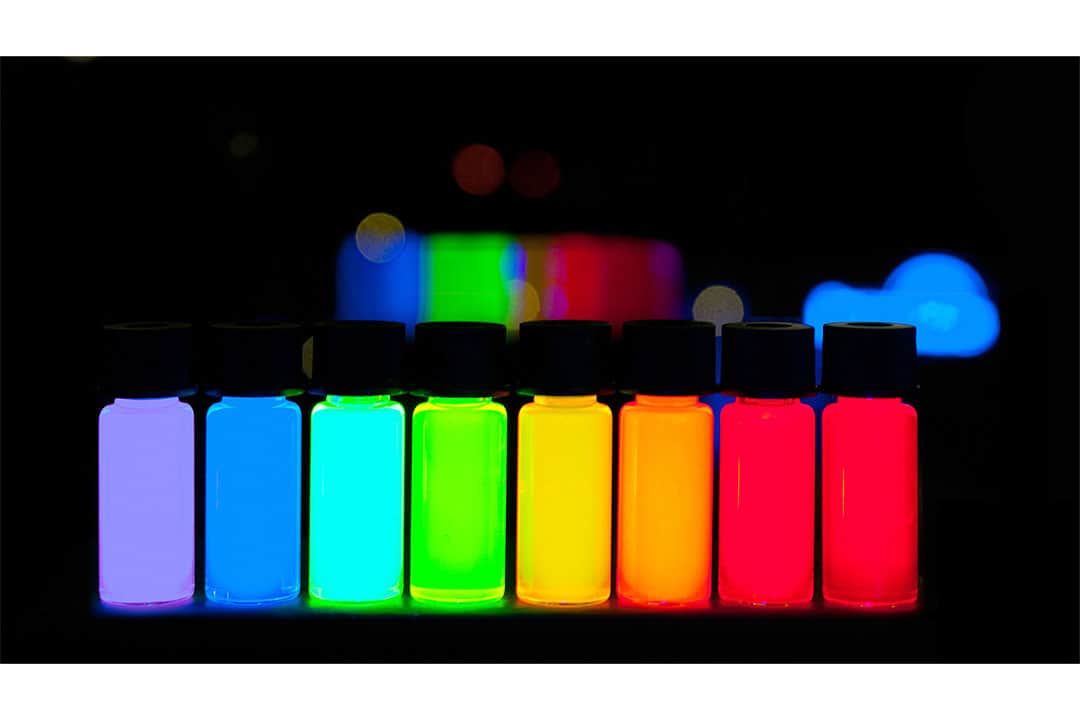On October 4, Louis E. Brus, Moungi G. Bawendi, and Aleksey Yekimov won the Nobel Prize in Chemistry for their work on quantum dots (QDs). QDs are microparticles of 10 to 50 atoms in diameter and can more heavily absorb blue light in the visible spectrum, making them useful for developing LED screens and better cameras.
Discovering quantum dots in two different labs
Yekimov started his work on glass infused with semiconducting materials — materials that can both conduct and insulate electricity — to examine the structure of the infused semiconductors. Yekimov tested the way glass infused with different-sized particles of a semiconducting compound called copper chloride absorbed light, and determined that the smaller particles absorbed more blue light. These small particles of copper chloride were the first QDs discovered.
In a different lab, Brus started working on using solar energy to power chemical reactions. He created tiny particles of a semiconductor called cadmium sulfide for his experiments. When creating the particles, he noticed that they absorbed more blue light than larger particles, indicating the small cadmium sulfide particles were QDs. The increased blue absorbance held true for other QDs made from different semiconducting materials, demonstrating the same results as Yekimov’s. In the early 1980s, both Yekimov and Brus created quantum dots independently of each other.
In 1993, Bawendi, a former postdoctoral student of Brus, and his research group created a method for reliably manufacturing QDs by injecting the precursor chemicals of the dots, like copper chloride and cadmium sulfide, into a carefully heated solvent. QD crystals formed and grew in size as the solution containing the QDs was heated, and Bawendi could stop their growth by cooling the solution. Bawendi showed, then, that changing the temperature of a QD solution allows the size of QDs to be precisely tuned.
Tuning the light quantum dots release
In an atom, there are tiny particles called electrons, which carry a negative electric charge. In the atom, these particles behave simultaneously as a particle and a wave. When a semiconductor absorbs light, an electron is released from the chemical bond between the semiconductor’s atoms.
In QDs, an electron is released from the bond when the QD absorbs light, but even once released, the electron’s wave is bound by the edges of the QD. The size of the electron’s wave determines the amount of energy, and different amounts of energy released create different colours of light. Thus, changing the size of the QD determines the size of the electron wave, which in turn determines the colour of light the QD releases.
QDs can be precisely grown to size using Bawendi’s methods, allowing us to tune QD particle size and thereby tune light. The tunability of the light that QDs release means they can recreate most colours in the visible or infrared spectra when used in electronic screens.
What can quantum dots do?
One current application of quantum dots is their use in QLED screens — LED screens utilizing QDs. Since QDs are able to efficiently emit a large spectrum of colours, many colours can be recreated accurately by QLED screens.
In normal LED screens, there is a panel with tiny white LED lights that show through a Liquid Crystal Display (LCD) panel to create the colours we see. The crystals in the LCD panel act like shutters that can let light through or block it. However, they often cannot block all the light, meaning darker blacks displayed on an LED screen can look grey.
In QLED screens, on the other hand, the LED light panel has blue LED lights, and there is a filter composed of many QLEDs that glow when they are hit with the light from the LED light panel — in addition to the normal LCD panel. QLEDs allow for screens that display greater contrast and more saturated colours, without looking washed out.
QDs could also be used to expand the properties of cameras for imaging in adverse environments, such as those with low light. In the near future, they could be used in infrared cameras and to improve image sensors. Finally, QDs could soon be useful in creating transparent solar panels for windows, where QDs are infused into the window glass. The QDs can absorb light from the sun and emit it as infrared light that is collected by a solar cell at the edge of the window.
QDs are an interesting and promising frontier for the future of chemistry and also for the field of quantum mechanics. They are already used in screens around us and their use will continue to multiply in the coming years. QDs show how quantum science can be used for everyday applications and how the interactions of light and molecules influence us everyday.



No comments to display.